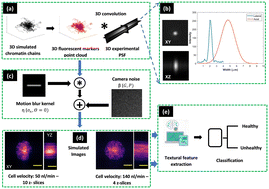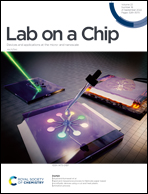On the robustness of machine learning algorithms toward microfluidic distortions for cell classification via on-chip fluorescence microscopy†
Abstract
Single-cell imaging and sorting are critical technologies in biology and clinical applications. The power of these technologies is increased when combined with microfluidics, fluorescence markers, and machine learning. However, this quest faces several challenges. One of these is the effect of the sample flow velocity on the classification performances. Indeed, cell flow speed affects the quality of image acquisition by increasing motion blur and decreasing the number of acquired frames per sample. We investigate how these visual distortions impact the final classification task in a real-world use-case of cancer cell screening, using a microfluidic platform in combination with light sheet fluorescence microscopy. We demonstrate, by analyzing both simulated and experimental data, that it is possible to achieve high flow speed and high accuracy in single-cell classification. We prove that it is possible to overcome the 3D slice variability of the acquired 3D volumes, by relying on their 2D sum z-projection transformation, to reach an efficient real time classification with an accuracy of 99.4% using a convolutional neural network with transfer learning from simulated data. Beyond this specific use-case, we provide a web platform to generate a synthetic dataset and to investigate the effect of flow speed on cell classification for any biological samples and a large variety of fluorescence microscopes (https://www.creatis.insa-lyon.fr/site7/en/MicroVIP).

- This article is part of the themed collection: AI in Microfluidics


 Please wait while we load your content...
Please wait while we load your content...